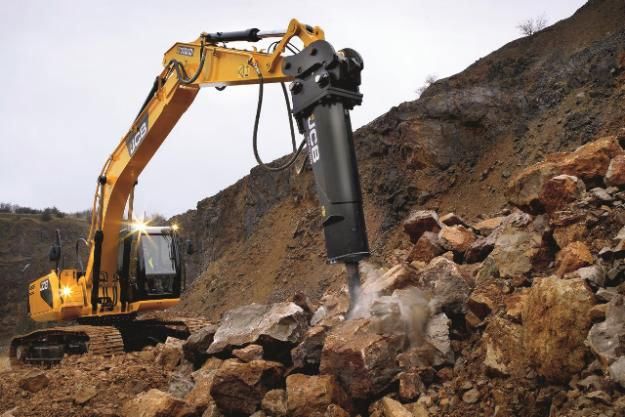Septic Ohio - Comprehensive Septic Tank Solutions in Ohio
Wiki Article
Comprehensive Excavation Methods: Mastering the Fundamentals for Success
In the world of construction and civil design, the significance of efficient excavation techniques can not be overemphasized. The mindful preparation, exact implementation, and thorough attention to information called for in excavation projects require a detailed approach that includes numerous fundamental elements. From first dirt analysis to the implementation of safety actions and regular progress monitoring, grasping these core elements is crucial for achieving success in any excavation venture. The real proficiency exists not just in recognizing these fundamentals yet in seamlessly incorporating them to navigate the intricacies of excavation tasks with skill.Comprehending Excavation Task Planning

The first phase of any type of excavation task is the planning phase, where crucial decisions are made that can dramatically impact the outcome of the job. Comprehending the project budget plan, extent, and timeline restrictions is vital for creating an extensive excavation plan that ensures the job's success.
One trick facet of excavation task planning is the development of an in-depth timeline that details the series of landmarks, tasks, and due dates. This timeline acts as a roadmap for the task group, permitting them to track progression and make necessary modifications to make certain the job remains on schedule. Additionally, a well-defined budget that represents all expenditures, including tools service, labor expenses, and products, is vital for avoiding expense overruns and delays. By carefully taking into consideration all these variables during the drawing board, excavation jobs can be performed successfully and efficiently, leading to effective results.
Dirt Evaluation and Site Examination
Carrying out comprehensive soil analysis and website evaluation is an important action in the preparation stage of any type of excavation task. Dirt evaluation involves figuring out the make-up, framework, and residential properties of the dirt at the excavation website. This information is crucial for comprehending the dirt's bearing capability, dampness content, and potential for disintegration, which are essential elements in determining the excavation techniques and devices needed for the project.Website evaluation goes beyond soil evaluation and incorporates a wider assessment of the total website conditions. This examination consists of recognizing any prospective threats, such as underground utilities, environmental worries, or unpredictable terrain, that can impact the excavation process. By extensively reviewing the website, project managers can develop efficient excavation approaches that focus on safety, performance, and environmental management.
Making use of sophisticated innovations like ground-penetrating radar, dirt tasting, and drone studies can enhance the precision and efficiency of soil analysis and site assessment. Investing time and resources in these preliminary steps can eventually conserve time and protect against expensive delays or issues throughout the excavation process.
Equipment Selection and Use
Reliable excavation jobs depend heavily on calculated devices choice and utilization to ensure ideal efficiency and productivity. Choosing the best devices for the task is vital in maximizing performance and reducing downtime. Aspects such as the sort of soil, depth of excavation, and project range play a significant role in determining one of the most appropriate devices for the task available.In enhancement to choosing the ideal tools, appropriate usage is essential to task success. Operators needs to be educated to deal with the equipment safely and effectively - lancaster excavation. Routine maintenance checks and timely repair Get More Information services assist protect against breakdowns and ensure constant efficiency throughout the job
Security Steps and Laws Compliance
In the realm of excavation tasks, focusing on precaution and conformity with laws is vital to making sure a legitimately audio and safe and secure operational atmosphere. Precaution include a variety of methods, consisting of conducting thorough site assessments, executing correct signs and barriers, and providing sufficient security training for all workers included in the excavation procedure. Adherence to regulations, such as OSHA needs in the United States, makes sure that the excavation task meets the required criteria to protect employees, spectators, and the surrounding environment.
Monitoring Progression and Adjusting Techniques
How can predict supervisors successfully track the improvement of excavation tasks and adjust their strategies appropriately to optimize outcomes? Tracking progress is essential for making sure that excavation projects remain on track and fulfill due dates. Project managers can utilize various tools and strategies to track progress, such as daily progression reports, regular site inspections, and progressed tracking modern technologies like drones and GPS tracking systems. By continuously keeping an eye on the project's innovation, managers can recognize any type of potential hold-ups or concerns at an early stage and take aggressive actions to address them.
Final Thought
To conclude, grasping the principles of thorough excavation approaches is essential for the success of any job. By comprehending job preparation, analyzing dirt and site conditions, choosing ideal tools, following safety guidelines, and checking progression, project managers can ensure a efficient and smooth excavation process. Implementing these techniques will cause effective end results and lessen possible risks or obstacles during the excavation project.
The first stage of any kind of excavation task why not try these out is the planning stage, where essential choices are made that can considerably influence the outcome of the job. Understanding the task scope, budget, and timeline constraints is essential for producing a comprehensive excavation plan that guarantees the task's success.
How can predict managers properly track the development of excavation tasks and adjust their methods as necessary to maximize outcomes? By very closely checking progress and being prepared to adapt approaches, project managers can boost the total success of site web excavation tasks.
By recognizing job preparation, examining soil and website problems, selecting ideal tools, abiding with security policies, and keeping an eye on progress, task supervisors can make sure a effective and smooth excavation procedure.
Report this wiki page